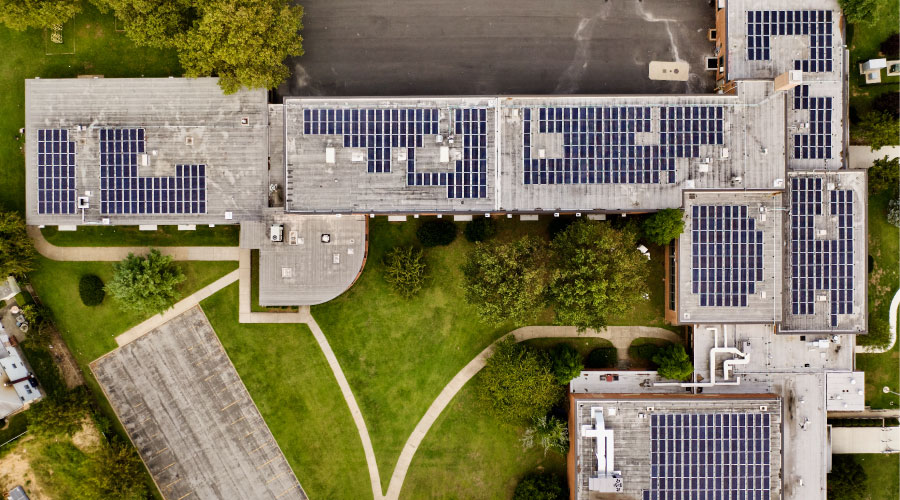Metal Roofs, Walls Offer Energy Efficiency Possibilities
Metal also offers intriguing possibilities for energy efficiency. Panels with built-in insulation can be installed on roofs or walls, Kriner says, and in recent years have been "making inroads in applications where new building codes are calling for R-values that are almost impractical."
Buchinger says that the pre-assembled insulated panels, in which a metal skin sandwiches 2 to 6 inches of foam, may be moving into the mainstream. Such systems have been used for years in freezer buildings, where any leak could be catastrophic and panels are sealed off from each other. Now that energy requirements are growing stricter, "imagine how well they would work in a normal building," Buchinger says.
New metal wall systems can make a huge difference in capturing passive heat, Bush says. Installing a dark-painted metal panel on a south-facing wall, with 4 to 8 inches of air behind it, creates a chimney of warm air — perhaps 65 degrees on a sunny winter day. When the HVAC system pulls that air in from the top of the wall, the building's heating costs can drop significantly. Some warehouses, Bush says, can "almost eliminate the need for heat."
In summer, the air can vent from the top of the wall, or, at night, the HVAC system can be turned on to pump cooler air into the building. On the roof, a slight air space between the old and new surface allows natural convection cooling. The entire arrangement can allow hot air to escape during the summer, but use the air as insulation in winter, a convenient best-of-both-worlds arrangement.
Higher energy costs and more stringent regulations have prompted engineers to explore "a lot of options for cooling or heating either air or water" with a metal building envelope, Croucher says. A development to keep an eye on, he says, is phase-changing material that absorbs heat during the day and releases it at night to help even out a building's temperature.
On A Cool Metal Roof
If building owners don't want to harvest heat, they can select a reflective metal roof. More than half of the sun's energy is infrared, which is responsible for heat. Croucher says that infrared-reflecting pigments in even dark colors of paint can reduce the amount of heat that a roof or wall would otherwise absorb.
"Metal roofing (or any roofing) doesn't really 'create' heat," says Mark Thimons, executive director of the Cool Metal Roofing Coalition. "Many metal roof products exhibit excellent reflective properties, and many are listed with Energy Star. These cool roofs reflect a high percentage of the sun's energy, resulting in a cooler surface temperature, and less heat that is transmitted into the building."
Related Topics:














